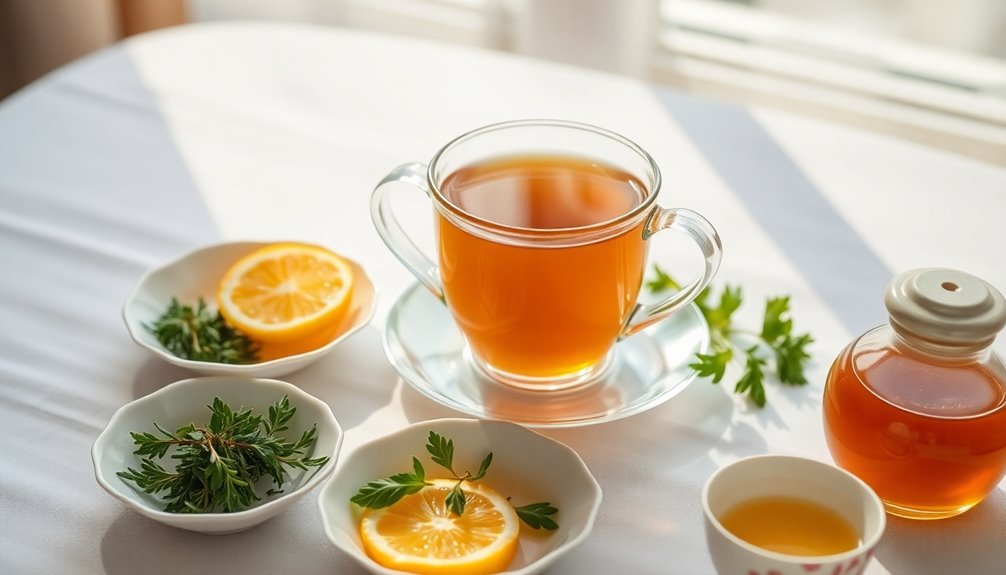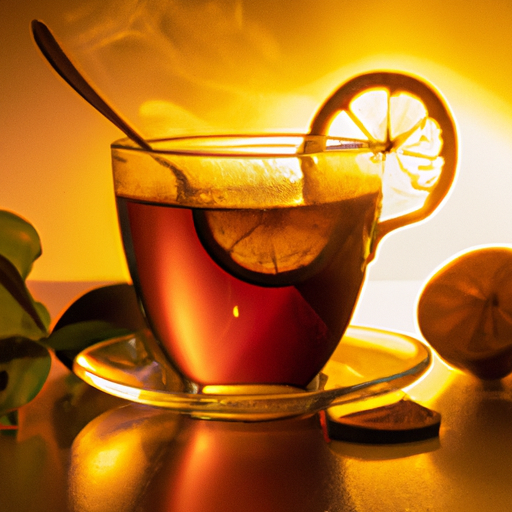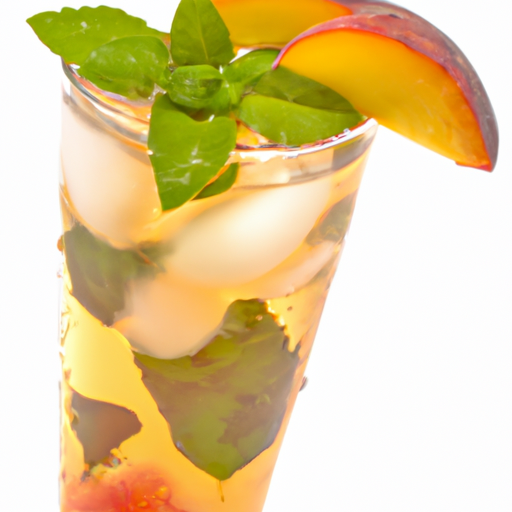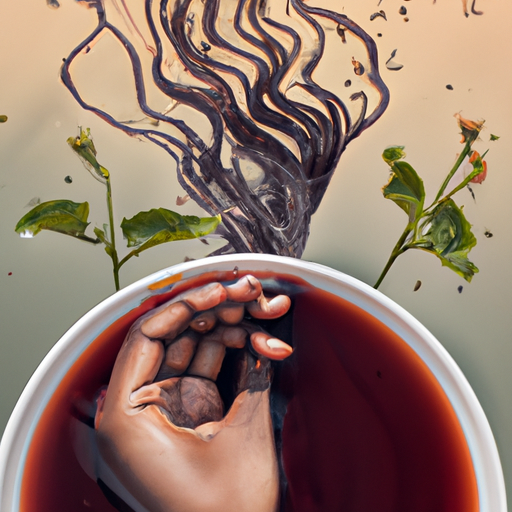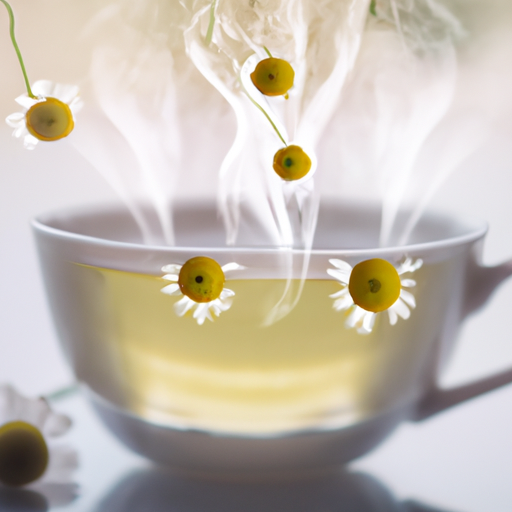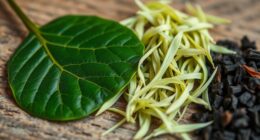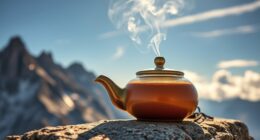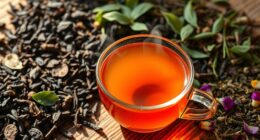Masala chai, a revered blend of spices and tea from India, has gained popularity among tea lovers globally. However, before we explore its delicious flavors and cultural importance, it’s important to clarify one thing: it’s not ‘chai tea’. That’s correct, labeling it as ‘chai tea’ is inaccurate since the term ‘chai’ already means tea. Essentially, you would be saying ‘tea tea’. Instead, let’s use its correct name: masala chai.
Originating from India, masala chai is a fragrant blend of cardamom, cinnamon, cloves, black peppercorn, ginger, and tea. The term ‘chai’ originally referred to a brew of steeped herbs and spices without any tea leaves. Today, masala chai can be made using different types of tea, and it’s traditionally prepared with loose-leaf tea and whole spices. The result is a warm and invigorating beverage that can be simmered on the stove-top for an extra creamy taste.
In this article, we will explore the origins and meaning of masala chai, as well as the different variations and ways to enjoy this delightful concoction. So, grab a cup of masala chai, sit back, and let’s embark on a flavorful journey through the world of this beloved Indian tea blend.
Key Takeaways
- Masala chai is a traditional Indian tea blend made with a combination of steeped herbs and spices, not just tea leaves.
- Masala chai can be made with various spices like cardamom, cinnamon, cloves, black peppercorn, and ginger.
- Authentic masala chai is made with loose-leaf tea and whole spices, not with pre-packaged tea bags or powders.
- Masala chai should not be confused with chai latte, as there is a noticeable taste difference between the two.
What is it?
I already know that masala chai is a traditional Indian tea blend that is commonly found in coffee shops, bakeries, and restaurants. Masala chai, which translates to spiced tea, is a flavorful and aromatic beverage that combines Indian black tea with a blend of spices such as cardamom, cinnamon, cloves, black peppercorn, and ginger.
This unique combination creates a rich and complex flavor profile that is both warming and invigorating. Apart from its delicious taste, masala chai also offers several health benefits. The spices used in the blend are known for their medicinal properties, including improving digestion, boosting immunity, and reducing inflammation.
Additionally, the black tea used in masala chai is a natural source of antioxidants, which can help protect the body against free radicals. So, not only is masala chai a delightful beverage to enjoy, but it also provides a range of health benefits.
Origins and Meaning
Originating in India, this beloved spiced tea blend has been enjoyed for centuries, with its name referring to a unique concoction of herbs and spices. Masala chai has deep cultural significance in Indian society, where it is not just a beverage but a symbol of hospitality and warmth. The origins of masala chai can be traced back to ancient Ayurvedic traditions, where it was used for its medicinal properties. Over time, it evolved into a popular beverage enjoyed by people of all ages. The blend of spices used in masala chai varies from region to region, with ingredients like cardamom, cinnamon, cloves, black peppercorn, and ginger being common. Each spice adds its own flavor and health benefits to the tea. Masala chai is more than just a drink; it is a reflection of Indian culture, tradition, and taste.
| Origins of masala chai | Cultural significance of masala chai |
|---|---|
| Ancient Ayurvedic traditions | Symbol of hospitality and warmth |
| Evolved into a popular beverage | Reflection of Indian culture |
| Blend of spices varies | Tradition and taste |
| Cardamom, cinnamon, cloves, black peppercorn, ginger | Health benefits and flavor |
Different Variations
One popular variation of this traditional Indian tea blend is known as a chai tea latte. This variation is commonly found in coffee shops and is made by steeping a blend of spices and black tea in hot water, and then adding steamed or warm milk. It’s often topped with a sprinkle of cinnamon or nutmeg for added flavor.
Masala chai, in all its variations, has a rich cultural significance in Indian cuisine. It’s not just a beverage, but a way of life. Masala chai is believed to have numerous health benefits, thanks to the spices used in its preparation. These spices, such as cardamom, cinnamon, cloves, and ginger, are known for their antioxidant and anti-inflammatory properties. They also aid in digestion and boost the immune system.
So, next time you’re craving a warm and comforting cup of masala chai, remember to try different variations and enjoy the cultural and health benefits it offers.
Frequently Asked Questions
How is masala chai typically prepared in Indian households?
In Indian households, the perfect cup of masala chai is brewed using authentic ingredients like Indian black tea, whole spices like cardamom and cinnamon, and simmering them together on the stove-top. It’s a delightful blend of flavors!
Are there any health benefits associated with drinking masala chai?
Drinking masala chai offers several health benefits. The blend of spices in masala chai, such as ginger and cardamom, can aid digestion and boost immunity. Additionally, the cultural significance of masala chai adds to its appeal.
Can masala chai be enjoyed without milk or sweeteners?
Yes, masala chai can be enjoyed without milk or sweeteners. Some alternatives include using almond milk or coconut milk, and adding natural sweeteners like honey or maple syrup. Unique masala chai recipes may also include other flavorful ingredients like vanilla or cardamom.
Are there any traditional rituals or customs associated with the preparation and consumption of masala chai?
Traditional chai ceremonies are an integral part of Indian culture. They involve the meticulous preparation and serving of masala chai, with each step holding symbolic significance. The spices used in masala chai add depth and complexity to the beverage, enhancing its flavor and aroma.
Are there any regional variations of masala chai in India?
Yes, there are various regional variations of masala chai in India. Each region has its own unique blend of spices and preparation methods, reflecting the cultural significance of chai in that particular area.


